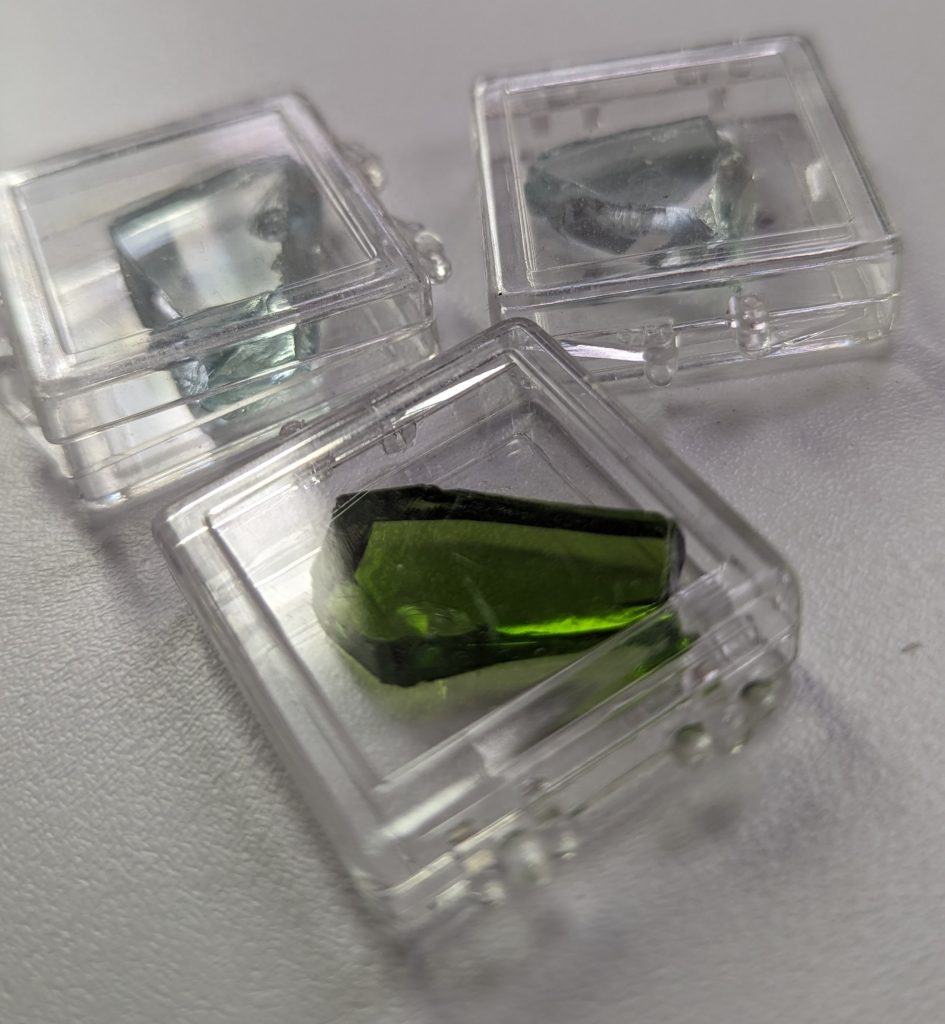The best analysis of a sample may be useless, if the sample is not well-selected for proper representation of the materials issue to be addressed or if it has been subsequently mishandled such that it is no longer representative of the issues to be addressed.
Selection
1) Representativeness: Exercise care that the sample sent to us is representative of the general problem you are trying to address. This can be a difficult problem for inhomogeneous materials or for cases of intermittent failures. It is best to know as much as possible about the history of the sample and that relationship with other product or failures.
2) Number: In some cases, it may be wise to send multiple samples so we can analyze several or select one that appears most representative. We may need to analyze more than one sample or multiple areas of a sample in order to produce a complete and informative analysis. Having arrived at a likely explanation for a failure of a particular item, it may be good to confirm whether other members of the group of failures failed for the same reason.
3) Size / Volume: Certain analytical techniques have sample size limitations. Please discuss size with us or review the technique page on our website for specifications. In addition, we recommend enough material or chemical to perform multiple analyses in the event that re-runs are required or analysis by another method is required; note that large amounts are seldom required since analyses usually only require small sample sizes and we wish to minimize potential issues with disposal and shipment costs. In some cases, we may have to cut your sample to make it small enough to analyze or to present the proper area or volume of material to analysis. Some analyses are inherently destructive, while others are not or at least do very little damage.
Handling
1) Hazardous or Corrosive Materials: Please alert us about known dangers in handling your samples. Of course we are concerned to keep our scientists safe and also with issues such as laboratory equipment contamination or corrosion. If a sample is corrosive to metals, please inform us.
For DSC: Materials containing F, Cl, Br, or I may not be submitted for analysis without informing us of that fact. The customer is responsible for the replacement of the $3000 DSC cell if their sample causes corrosive attack and failure of the cell when we were not fully informed of the chemical composition of the sample. If you do not know that chemical composition, we can perform the analysis for the chemical composition and then decide whether we should perform the DSC analysis.
2) Material Handling: Exercise care that samples have not been contaminated by handling or shipping conditions that will compromise their character; even fingerprints may contaminate or ruin a sample to be subjected to surface analysis or an outgassing study. To handle properly:
- Handle all samples with clean gloves unless the sample has been necessarily already handled in use without gloves. Generally, surfaces to be analyzed by XPS surface analysis should not be touched with or without gloves.
- Do not contaminate samples with machining oils or cooling fluids in cutting them from larger pieces, and
- If sample cleaning is necessary to analyze the sample properly, it is often best to leave that cleaning to us or to discuss any methods for cleaning prior to sending samples with our team.
3) Packing: It is best that surfaces to be analyzed not be in contact with packing materials. If this is unavoidable, use clean packing materials. Food storage aluminum foil and zip-lock sandwich bags by the best known firms are often good options for ensuring cleanliness if you do not have other packing designed for this purpose. Off-brand products may be contaminated by silicones and other undesirable contaminants.
4) Shipment / Drop-off: UPS and FedEx offer us the most reliable delivery service. Samples may generally be dropped off at the lab between 0930 and 2100 hours on weekdays. Special arrangements should be made for early morning or weekend drop-offs or shipper deliveries of large items or items on pallets.
Please check out our “Contact Us” page for more information or if you need to reach out to us with questions/concerns.
Click here for a sample submission overview.


